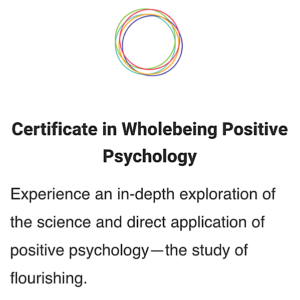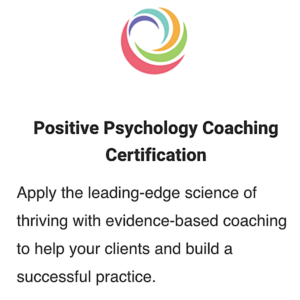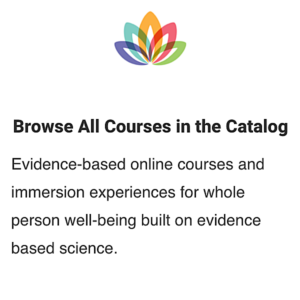by Elaine O’Brien
I was thrilled when Megan McDonough asked me to present my program. Move2Love, and my related research on well-being, at the Wholebeing Institute’s inaugural Embodied Positive Psychology Summit at Kripalu this spring. Months later, I am elevated, still vibrating from the beautiful, empowering, validating summit experience. Attending Megha Nancy Buttenheim’s uplifting preconference workshop, Let Your Yoga Dance, helped set the stage for embracing rich connections with fellow conference participants—and connecting with myself.
A hallmark of the summit was the blend of theoretical, empirical, and experiential opportunities that were presented. Occasions were offered for us to think, dance, and move together, stimulating our bodies, minds, hearts, and souls. There was a feeling of true joy.
As a forerunner in the burgeoning fields of group dance/fitness, applied positive psychology, and positive aging, I research, practice, and appreciate that there is energy, connection, motivation, and real power in positive, rhythmic movement, and especially when priming enjoyable movement with others in synchrony. Moving together rhythmically in a group can lead us to feelings of awe and communitas. Communitas is an elevating force that helps us feel great because we understand that we are part of something bigger than we are as individuals. Moving with others helps to generate the peak state called flow.
In Flow: The Psychology of Optimal Experience, Mihaly Csikszentmihalyi discusses how we can generate flow through physical experiences that apply a broad range of rhythmic or harmonious movements. One of the best ways to create more flow experience is through music. In flow, we feel moments of satisfaction, concentration, and deep enjoyment. Newer research has demonstrated that social flow—experiencing flow states with others—is more enriching and rewarding.
I launched Move2Love, a dance/fitness program, in the 1980s. The program goal was, and still is, helping people find greater, more loving connections to their bodies, minds/brain-powered movement (especially aerobics training), and each other. Aerobics—meaning “in the presence of oxygen”—has been repeatedly demonstrated to improve cognitive functioning. Move2Love was the subject of my recent doctoral research, “Positive, Active, Older, but Youthful Women and FITDANCE: Uplifting Community Dance Exercise.” I will be presenting on the program and its positive therapeutic effects at the upcoming American Psychological Association’s annual convention in Denver this week.
The idea for Move2Love came to me one icy Monday morning. It was pure serendipity. I was scheduled to teach a 6:00 am Aerobics Dance class at a local gym. Only one woman, Susan, a new student, came to class. Susan told me “not to bother” teaching her because she was the only one there. Since she was there and I was there, I suggested we go for it. We trained, talked, and laughed for the 60 minutes.
After the class, Susan made me an offer that would change my life. She was a social worker and had received a grant to develop a community alliance program to help reduce the risk of alcoholism and drug abuse in senior adults in New Jersey. She asked me to help.
I accepted her offer, and created a group dance/fitness program with an emphasis on safety, effectiveness, and fun, using music that would be enjoyable for our older population. As Ellen Langer did in her Counterclockwise study, I chose music and choreography to help my students act and feel younger. This functional fitness program offered easy-to-follow dance steps and “social fitness”; the idea was to foster feelings of friendliness, inclusivity, and warmth among the group members.
The Move2Love program has grown from one day a week to now four mornings a week, won an Innovation Award, and served thousands of students. Today, 100-plus students attend weekly, from brand-new arrivals to some who have been coming for more than 20 years! Recently, a student wrote me, “You and the program are the perfect antidote for depression, sadness, loneliness. Thank you so much for your love for life and personally for me!”
Tal Ben-Shahar, in Happier, speaks about the mind-body connection, and assures us that “exercise feels good.” He also writes that “not exercising is like taking a depressant … when you exercise and your heart begins to pound, your body releases endorphins, which leads to an increased feeling of happiness.”
Programs like Let Your Yoga Dance and Move2Love offer a chance to experience more joy, while learning new skills, communicating, connecting, experimenting with social identity, and expressing ourselves in an aesthetic, safe, and sensually loving, pleasing way. Further, there is purpose in discovering our vibrancy, and meaning in using our healthy bodies to help ourselves and others. In my next blog post, I will present some of my Move2Love research findings, and share how you can get inSPIREd via positive movement matters.
Elaine O’Brien, PhD, MAPP, CAPP, is a forerunner in the fields of applied positive psychology, Whole Fitness, and positive aging. An internationally acclaimed speaker and author, Elaine has presented at the 2016 American Psychological Association Conference, in Denver, Colorado; the first China Positive Psychology Conference in Beijing; and the Canada and European Positive Psychology Conferences. Elaine is creative director and CEO of Lifestyle Medicine Coaching and Training, LLC, a consultancy, and FitDance: Move2Love training and presentations for whole health and optimal performance. Her doctorate in Kinesiology: Psychology of Human Movement and her Masters of Applied Positive Psychology, from the University of Pennsylvania, align with her background, early vision, and dedication to promoting positive public health, well-being, and social justice for the greater good.


 Elaine O’Brien, PhD, MAPP, CAPP, is a forerunner in the fields of applied positive psychology, Whole Fitness, and positive aging. An internationally acclaimed speaker and author, Elaine has presented at the 2016 American Psychological Association Conference, in Denver, Colorado; the first China Positive Psychology Conference in Beijing; and the Canada and European Positive Psychology Conferences. Elaine is creative director and CEO of Lifestyle Medicine Coaching and Training, LLC, a consultancy, and FitDance: Move2Love training and presentations for whole health and optimal performance. Her doctorate in Kinesiology: Psychology of Human Movement and her Masters of Applied Positive Psychology, from the University of Pennsylvania, align with her background, early vision, and dedication to promoting positive public health, well-being, and social justice for the greater good.
Elaine O’Brien, PhD, MAPP, CAPP, is a forerunner in the fields of applied positive psychology, Whole Fitness, and positive aging. An internationally acclaimed speaker and author, Elaine has presented at the 2016 American Psychological Association Conference, in Denver, Colorado; the first China Positive Psychology Conference in Beijing; and the Canada and European Positive Psychology Conferences. Elaine is creative director and CEO of Lifestyle Medicine Coaching and Training, LLC, a consultancy, and FitDance: Move2Love training and presentations for whole health and optimal performance. Her doctorate in Kinesiology: Psychology of Human Movement and her Masters of Applied Positive Psychology, from the University of Pennsylvania, align with her background, early vision, and dedication to promoting positive public health, well-being, and social justice for the greater good. 



Elaine, you have a unique gift which you share so generously with your students whom you make friends! The positive energy you exude is contagious and results in uplifting your students & binding them together in a community of support & inclusiveness. You are constantly learning & share your discoveries with us & always incorporate new music as well as touches of yoga & tai chi into your varied & well-balanced routines. Mere words cannot capture what you so generously give to us! Thank you!
Dearest Elaine, when in your company,speaking by phone or in reading your blog ,the first emotion to surface is hope. Hope for a shot at being healthier and happier. For many women I know that are transitioning to their 50’s, 60’s,the message you extend tells us life is not heading down hill now, but rather this is the perfect time to be our best self! Thank you for your tireless research and for sharing your expertise , for the development of classes. For your love that you are so generous with and your friendship!
Dear Donna, You are truly a light in the world. I’m so happy that we met at the “Let Your Yoga Dance” pre-Summit workshop at Kripalu Institute. What a thrill. I believe that movement experiences can allow us to open up and deepen our relationships with ourselves and each other. I think that’s what happened with us and our group. I appreciate you, your experience, and wisdom. Thank you for your lovely note and beautiful spirit. Blessings.
Elaine,
Reading your post brought back so many of the experiences of the summit and of your lovely joint workshop at CPPA. We all felt the sense of communitas during the few minutes of exercise that you led us through. It is uplifting, connecting and energizing. Thank you for bringing your energy and warmth to people who really need it!
Dear Ruth, Thanks for the lovely note and reminder of our experience at CPPA. I’m thrilled to know you, and appreciate the great work that you are doing. Hope to see you, and get to dance/move/celebrate with you again soon. Cheers!
Dear Patty, Thank you for your lovely note. I am grateful to know you and to get to share mornings moving together in our FitDance/Move2Love and AquaFitness classes. Your beautiful spirit of openness, warmth, and caring are lovely, just like you. Thank you for the care you show to others, and me. What a gorgeous blessing you are, Patty!